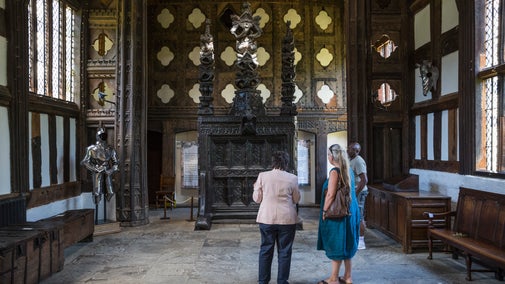What work will be carried out onsite?
Work to create the conditions that will allow a wet grassland habitat to develop and restore vital peat is due to start January 2025 and be completed by Spring 2025.
A variety of techniques will be used in order to rewet the area.
- Existing ditches will be reprofiled in strategic places to encourage water to spill out on to the fields and weirs installed to reduce water flow and loss of water across the site.
- Ditch blocks will be installed to hold water on site during drier periods, preventing the drying out and erosion of peat. A new ditch will be created to the west of the site acting as a ‘header ditch’ and new ditch crossings formed to improve access across the area.
- Several wet grassland species will be planted, boosting biodiversity and providing places for wildlife to breed, nest, feed, and shelter.
- Interpretation boards will be installed detailing the project, and you can follow our progress throughout via the timeline below.
What are the benefits of this project?
Re-wetting the site will help restore vital peat, reduce greenhouse gas emissions, and preserve potential archaeology (explained further below). Wet grasslands are critical ecosystems within agricultural landscapes and play a multifaceted role in sustainable farming practices.
Creating a wet grassland area will increase biodiversity across the site as it will create a range of wet and drier areas that will appeal to a variety of grassland species. It will also provide a stepping-stone between wetland habitats, from the Lancashire coast through to Mere Sands Wood and Martin Mere.
For locals and visitors to Rufford Old Hall, it will provide a new point of interest and experience with potential for providing further access to the land at Manor House Farm in the future.
Potential to be an archaeological site?
In February 2023 a historic environment assessment was carried out on the land at Manor House Farm. The results revealed areas of high and moderate potential for archaeological importance due to pre-historic and medieval remains found nearby. There were also cropmarks found in the southern half of the Manor House Farm site that indicate a possible enclosure.
These results have added to the importance of re-wetting the land as peat has the potential to contain an archaeological record of past local environmental conditions and can also preserve archaeological remains.
Working in partnership
In partnership with Lancashire Wildlife Trust (LWT), the project will be mainly funded through the government’s Nature for Climate Peatland Grant Scheme, with additional funding from Starling Bank’s partnership with the National Trust.







